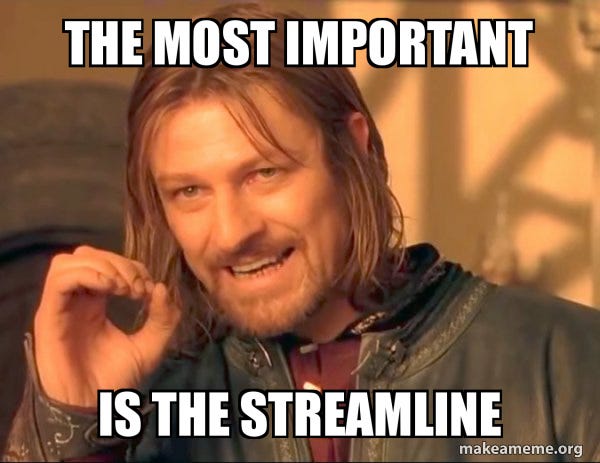Five ways to get work done faster
We promise we only use the word "streamlining" once in this post.
Getting work done isn’t about cramming more into your day - it’s about cutting through the noise and focusing on what truly moves the needle. Whether you’re leading a team or tackling solo projects, streamlining how you decide, prioritize, and execute can transform how much you accomplish without burnout.
Here are five strategies to help you work with more clarity and impact.
1. Implement personal WIP limits.
Focusing on fewer tasks at a time boosts efficiency.
Setting work-in-progress (WIP) limits helps prioritize what matters, reducing delays and context-switching fatigue.
Limiting active projects to two or three ensures smoother delivery, better quality, and clearer focus.
2. Ritualize rapid decision-making.
Decisions can often stall progress.
To keep momentum, use quick decision-making frameworks like the “10-minute rule” - decide within 10 minutes or move forward with the best information available.
Tools like “fist-to-five” voting during stand-ups also streamline choices and prevent analysis paralysis.
You can also designate a "decision owner" for each project or task, ensuring there's always someone accountable for making the call when the team hits a roadblock.
3. Automate anything repetitive.
Repetitive tasks eat into valuable time. I have posted on this in the time machine where I hit on all of the time suckers:
One way to fight the good fight and keep your time is to automate where possible.
Whether focused on building reports or customer follow-ups, tools like Zapier or Make can handle workflows seamlessly.
Dashboards for real-time updates, for example, replace manual reporting and free you up for higher-value work.
4. Leverage existing solutions.
You don’t always need to start from scratch.
Borrow existing templates, tools, or ideas and tailor them to your needs.
For example, repurposing user personas from a previous project or customizing an off-the-shelf solution can save time while maintaining effectiveness.
I have had dozens of enhancements built off existing technology, and we could go to market faster just by leveraging what has already been built.
It’s not cutting corners- it’s smart problem-solving.
5. Simplify your priorities (aka “cut the noise”).
Many teams get bogged down by work that adds little value.
Outdated processes, redundant tasks, and low-priority projects can sap energy and slow progress.
Start by asking: “What’s not worth doing anymore?”
Eliminating unnecessary tasks - like unused reports or low-impact initiatives - frees up time for work that drives results.
Final Thoughts
Getting work done faster isn’t just about speed - it’s about making deliberate choices that maximize impact. When you focus on what matters most, automate repetitive tasks, and leverage existing solutions, you create an environment where meaningful progress thrives without chaos.
But here’s the challenge: Are we as efficient as we think, or just busier? Simplifying priorities and rethinking how we approach our work is a constant practice, not a one-time fix.
Until next week,







I love your advice on 2. Ritualize rapid decision making. I think it also relates to delegating decisions to the right people.
I was being asked this week by developers which technical approach they should apply, A or B. Both seemed logically good to me, but I pushed them to ask the architect. He is the right person to decide.
In the end, the real solution was option C which they hadn't thought of, imagine if we had spent all day waiting for my decision between A or B, only to find out that neither was reliable.
Great post, Mike!